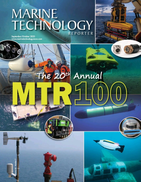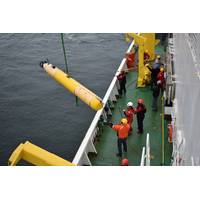
MBARI Research Supports Cryospheric Science
in the Arctic. This summer, MBARI researchers will return to the Canadian Beaufort Sea to continue this work.MBARI’s collaborators on this body of work include researchers at the Geological Survey of Canada, Fisheries and Oceans Canada, the Korean Polar Research Institute, and the US Naval Research Laboratory.MBARI is part of the Southern Ocean Carbon and Climate Observations and Modeling (SOCCOM) project, an international, multi-institutional effort to help researchers better understand the Southern Ocean, one of the most challenging regions to study on the planet.SOCCOM uses robotic BGC-Argo
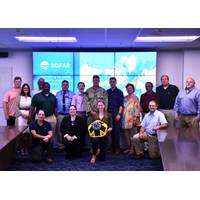
US Navy Taps Into Sofar Ocean's Data Buoy Network for Weather Forecasting
to ensemble-based data assimilation and coupled modeling; and its DaaS products. Representatives from Naval Oceanography’s subordinate commands and partners — the Naval Oceanographic Office (NAVOCEANO), the Fleet Numerical Meteorology and Oceanography Center (FNMOC), and the Naval Research Laboratory (NRL) — also attended the event. The groups provided critical insights about hardware deployment capabilities, data needs, and the Verification and Validation (V&V) process. NAVOCEANO, FNMOC, and NRL will each play a central role in the identification of use cases for Sofar&rsquo
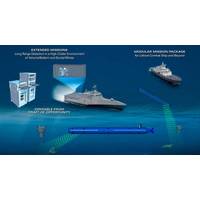
Getting to the Bottom of the Navies' Mine Warfare Challenges
cycle required to act on that specific threat. That presupposes that the underwater vehicle can communicate with a surface buoy or surface and send a message by satellite or other means; but, if that’s the case, a launch and recover cycle can be avoided or delayed.The Naval Research Laboratory (NRL) is a scientific and engineering command dedicated to research that drives innovative advances for the U.S. Navy and Marine Corps from the seafloor to space and in the information domain. NRL is located in Washington, D.C. with major field sites in Stennis Space Center, Mississippi
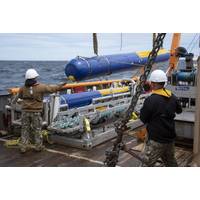
Subsea Defense: Navy Deepens Commitment to Underwater Vehicles
;The NRDE spent years developing prototype sensors and algorithms that were tested in relevant environments to perfect the technology for transition to a program of record,” Taylor said.“Low-frequency broadband (LFBB) is our term for a technology area that we developed here at the Naval Research Laboratory (NRL) that exploits the structural acoustics involved with underwater sonar,” said Dr. Brian Houston, Acoustics Division superintendent at NRL. “When you transmit sound, the acoustic return is very different depending on the physical object that is reflecting that acoustic
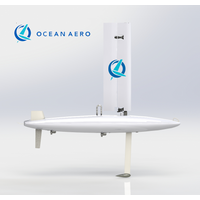
Ocean Aero to Supply Vehicles for Homeland Security
research, evaluation and testing program.Ocean Aero will deliver a mix of its Navigator and Discovery models and working closely with DHS and other program participants—the U.S. Coast Guard (USCG), U.S. Customs and Border Protection (CBP), The University of Southern Mississippi, the U.S. Naval Research Laboratory (NRL), and Cherokee Nation Strategic Programs, LLC. Ocean Aero’s vehicles will be deployed in a wide range of ocean environments providing a platform for the integration, testing, and evaluation of a variety of advanced sensors.“This is a strategic agreement, and we’re
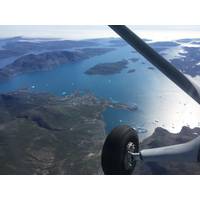
Airborne Hyperspectral Survey, Mineral Mapping in Greenland
Resources. The first phase of the project consisted of collecting airborne and land-based data. Field operations were conducted from late July to early August 2019 by project partners including the Greenland Ministry of Mineral Resources, the U.S. Department of State, the U.S. Naval Research Laboratory, the U.S. Geological Survey, and Asiaq - Greenland Survey. The next phase of the project will include processing and analysis of the hyperspectral data. ASL's team of researchers, analysts and geologists will generate a range of information products and maps in collaboration with
USN: Knifefish UUV Program Achieves Milestone
Package and will reduce risk to Navy personnel and equipment.The Knifefish system, which consists of two unmanned undersea vehicles along with support systems and equipment, uses cutting-edge low-frequency broadband sonar and automated target recognition software technology developed by the Naval Research Laboratory and successfully transitioned to industry. It acts as an off-board sensor while the host ship stays outside the mine field boundaries.Knifefish’s common open systems architecture design and modularity allow for platform flexibility and quick reconfiguration of the mission package to
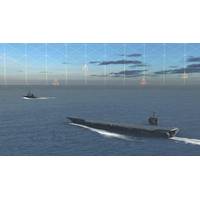
US Navy Strengthens Battlespace Situational Awareness
in a coordinated effort that will benefit not only the Navy but the entire Department of Defense community.” Other members of BAE Systems FSSR team include the S2 Corporation, University of Colorado Boulder, Montana State University, Purdue University, HRL Laboratories and the Naval Research Laboratory
Navy Space-Based Orbital Debris Sensor Gets Patent
Small orbital debris objects can threaten vital space-based assets. The Navy's patented compact debris detection device can detect debris in near real-time and provide essential trajectory data for future use. The U.S. Naval Research Laboratory (NRL), Geospace Science and Technology Branch, received U.S. patent (#8976245), March 10, for the Optical Orbital Debris Spotter - a compact, low power, low cost, local space debris detection concept that can be integrated into larger satellite designs, or flown independently on-board nano-satellite platforms. Man-made debris orbiting the Earth continues to
 August 2025
August 2025


